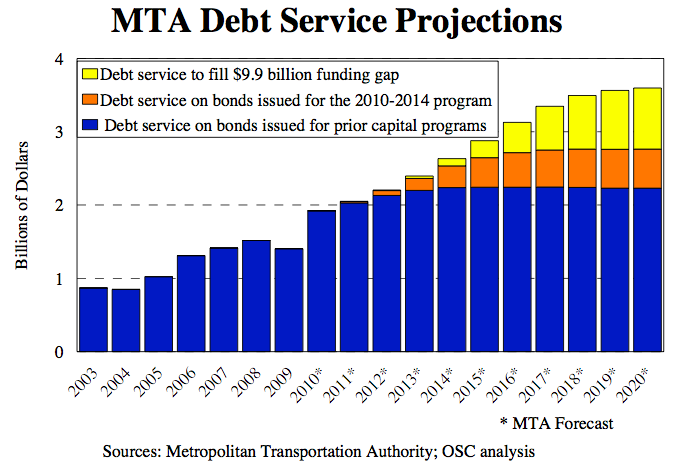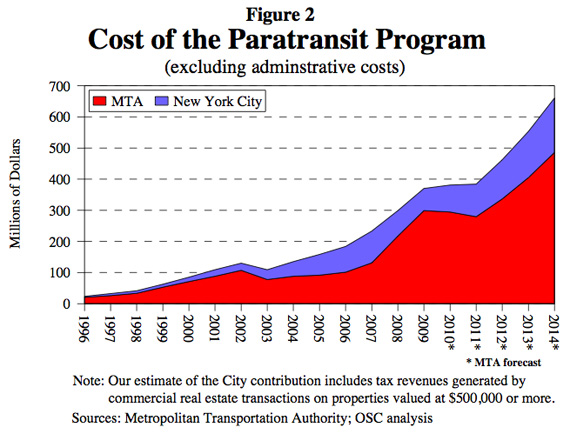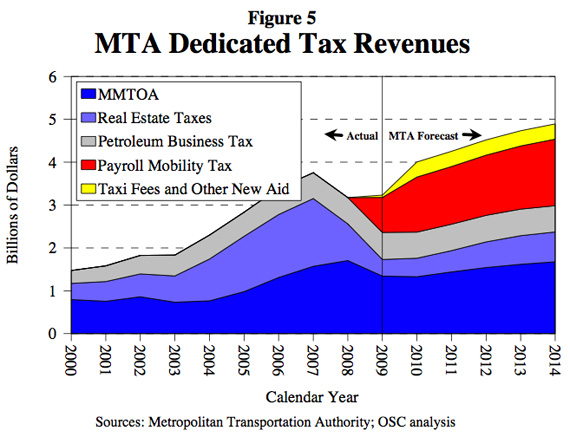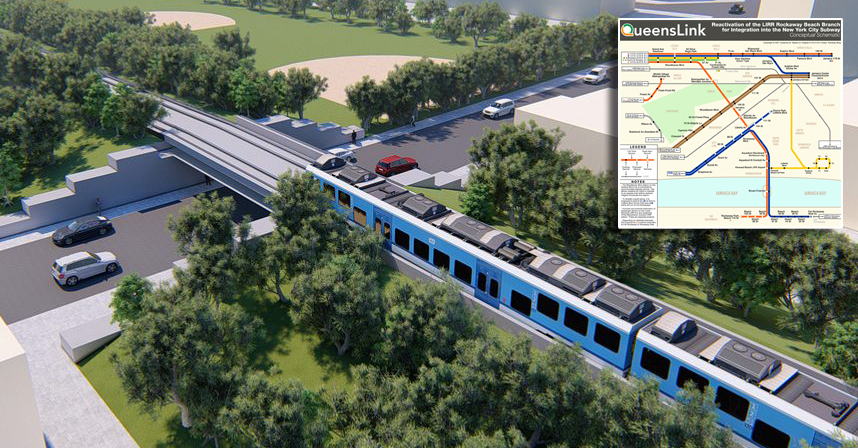
Earlier this week State Comptroller Tom DiNapoli came out with his latest report on the MTA's troubled finances [PDF], and if you take a look at the numbers, the big takeaway is pretty stark. Without funding for the $9.9 billion hole in the agency's capital program, MTA debt will soar even higher. If legislators don't secure more revenue for maintaining and expanding the transit system, there are basically two options: either the MTA can reduce its capital spending or straphangers can pay the price through higher fares and worse service.
But if you read the release from DiNapoli, the takeaway is different:
We’re seeing the effect of the recession and years of undisciplined bloat and inefficiency. The MTA’s current administration is working to close its budget gap, but commuters and taxpayers are demanding results. The MTA needs to change the way it does business. Repeated fare hikes and service cuts can’t change a culture of complacency. My office has identified more than $296 million in waste and savings opportunities over the last year alone, and we recently began a forensic audit of the MTA’s $600 million overtime budget. These are tax dollars. Inefficiency and complacency just don’t cut it.
"Undisciplined bloat and inefficiency"... "culture of complacency"... These are the phrases that leap out of DiNapoli's presser. Streamlining the MTA is all to the good, and $296 million is significant, but relying on too much borrowing to fund the capital program is a much bigger problem: Debt service is projected to cost the MTA $1.7 billion more in 2019 than in 2010, under the current scenario.
DiNapoli notes that the gap in the MTA capital program is a major threat, but manages to do it in a way that deflects responsibility from legislators: "The MTA assumes that the state and local governments will fill the gap, an optimistic assumption in the current economic environment." DiNapoli conveys no expectation that Albany or the city should step forward and enact new revenue streams to fill this shortfall. This is the sort of rhetoric that continues to let state representatives like Brooklyn's Joan Millman off the hook for failing to fund transit.
The report itself is a different story, laying out quite clearly some of the major causes and effects of the MTA's budget crisis.
Straphangers are already being forced to carry the weight of the capital plan, for instance. When the 2010-2014 capital plan was written, the MTA included $6 billion in revenue from bonds supported by the payroll mobility tax. The payroll tax ended up raising less revenue than expected and the MTA now expects only $4.4 billion from those bonds. The remaining $1.6 billion is coming from operating revenue including fares and tolls.
To put that number in perspective, the MTA's service cuts are projected to save a total of only $523 million between 2010 and 2014, according to DiNapoli's report.
It makes you wonder why the comptroller's "forensic audit" will be focusing on overtime and not the runaway costs of big-ticket construction projects like the Second Avenue Subway and East Side Access.
The report also graphically shows how paratransit costs have doubled over just the last four years and are projected to keep on rising:

Tax revenues nosedived after the recession. Real estate taxes alone plummeted 75 percent, bringing in $1.6 billion in 2007 but only $389 million in 2009:






